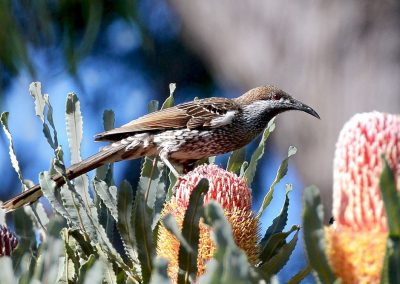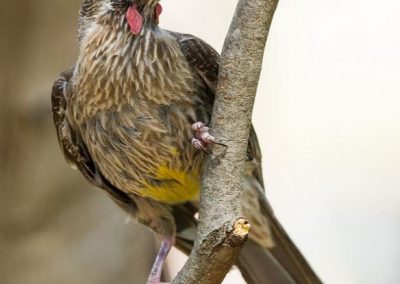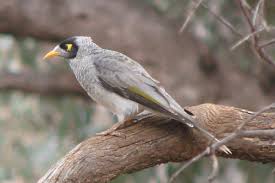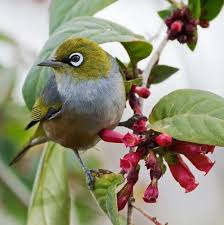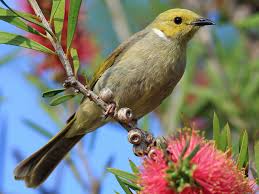Wildlife Info
Nectivores
Nectivore species include New Holland Honey-eaters, White Plumed Honey-eaters, Red Wattle Birds, Little Wattle Birds, Noisy Miners and Silvereyes.
Insects, nectar & pollen from native flowers, Sap from eucalypts & wattles, soft fruit & berries.
Honey-eaters (Meliphagidae) are a specialised group in the nectivorous birds, as they have adapted their digestive system, to be able to have a mainly nectar diet, compared to other nectivores, which have a mix of nectar and insects.
The Silvereye is a small bird with a conspicuous ring of white feathers around the eye, and belongs to a group of birds known as white-eyes. The Silvereye shows interesting plumage variations across its range. The grey back and olive-green head and wings are found in birds through the east, while western birds have a uniformly olive-green back. Breeding birds of the east coast have yellow throats, pale buff flanks (side of the belly) and white on the undertail. Tasmanian birds have grey throats, chestnut flanks and yellow on the undertail. To complicate this, the birds in the east have regular migrations within Australia and may replace each other in their different areas for parts of the year. Birds in Western Australia have yellowish olive, rather than grey, backs.
Habitat: Silvereyes may occur in almost any wooded habitat, especially commercial orchards and urban parks and gardens.
Some facts:
They grow to about 15cm tall, and weigh only 5-10 grams, although they have amazing stamina. Silvereyes live up to ten years. They are also able to fly for long distances, as they migrate at the end of summer. Some in the Silvereye family can travel all the way to Queensland from Tasmania.
The Red Wattlebird is a large, noisy honeyeater. The common name refers to the fleshy reddish wattle on the side of the neck. The plumage is grey-brown on the body, with prominent white streaks and yellow on the belly. The face is pale and the tail is long with a white-tip. Young Red Wattlebirds are duller than the adult and have a brown, rather than reddish, eye. The wattle is also very small and pale.
Habitat: The Red Wattlebird occurs in forests, woodlands and gardens, where it aggressively protects food-bearing plants from other honeyeater species.
Some facts:
They are a large honey-eater that is easily identified by their fleshy reddish wattle on the side of the neck. Red Wattle birds eat mostly nectar but also some insects and can be very aggressive towards other birds eating in the vicinity. They can be difficult to see, when they are amongst shrubs and bushes. They have a loud harsh çookey cook’ and ‘tobacco box, tobacco box’ call.
The New Holland Honeyeater is mostly black and white, with a large yellow wing patch and yellow sides on the tail. It has a small white ear patch, a thin white whisker at the base of the bill and a white eye. This honeyeater is an active bird, and rarely sits still long enough to give an extended view. Sexes are similar in looks, but females are slightly smaller in size. Young birds are browner and have a grey eye.
Habitat: The New Holland Honeyeater is common in heath, forests, woodland and gardens, mainly where grevilleas and banksias are found. It is inquisitive and approaches humans. It also mixes with other types of honeyeaters.
![]()


